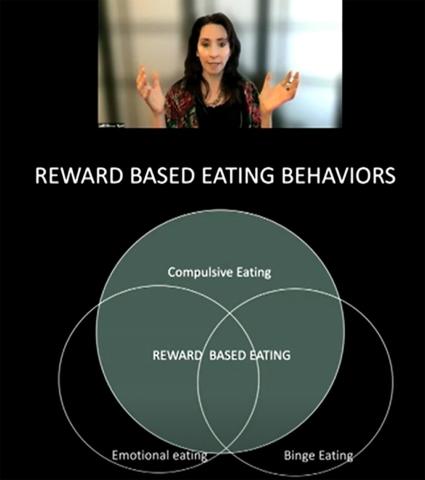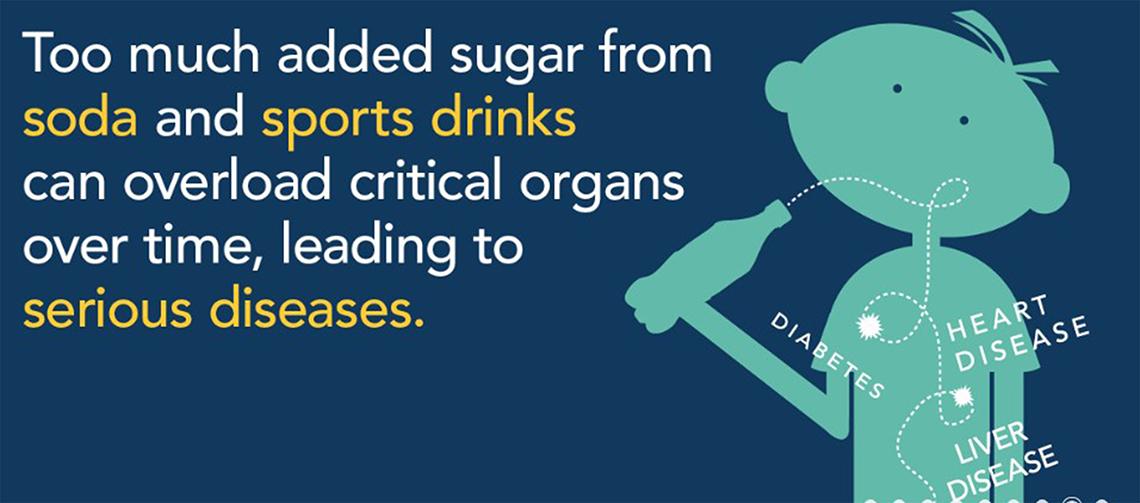Mindfulness & Metabolism
Epel Expounds on Emotional Well-Being

There’s too much to do and too little time. It’s a common refrain. Too often, though, wellness gets forsaken in this scenario.
“We always have daily stressors that keep us in active coping mode rather than in a restorative, regenerative mode,” said Dr. Elissa Epel, professor and vice chair, department of psychiatry at the University of California, San Francisco, speaking virtually at an NCCIH Integrative Medicine Research lecture.
Now added to the daily grind of individual responsibilities and pressures is a communal burden. “We now have a prominent forefront of societal and global stressors,” said Epel. Pandemic. Climate change. Systemic racism. “There is a stronger sense of existential stress that is new and it’s leading us to view the future as highly uncertain.”
With burnout, anxiety and depression on the rise, the inclination is to treat such conditions with medication and therapy. While treatment is important, Epel urged a focus on prevention—by bolstering wellness.
Need for Communal Healing

Communal stress needs communal healing, said Epel, who with colleagues at UCSF, UC-Berkeley and Harvard formed an NIH-funded multidisciplinary group—the Network for Emotional Well-Being (NEW-B)—to develop mind-body interventions that improve emotional and consequently overall health.
In their efforts to understand and measure emotional well-being, the set of NIH national networks on emotional well-being (EWB) first drafted a working definition. Emotional well-being encompasses how a person feels generally and about life, everyday experiences and reflections. As the definition inevitably evolves, Epel and colleagues seek to gauge whether such fundamental components as optimism and social connections are predictors, mediators or outcomes of EWB.
“My view of emotional well-being is that, while it has such important direct effects on mental and physical health and healthy aging,” said Epel, “a big part of how it works is interacting with stress, both as a buffer to stress responses over the lifespan, but also as a resource that grows with exposure to adversity.” Confronting adversity and trauma boosts resilience and can deepen appreciation for life, social connections and other aspects of emotional well-being.
Restorative Pathways
Studies have shown that positive emotional well-being creates restorative and catabolic stress-related processes. “We believe that together, throughout the lifespan, there are cumulative effects on both health and disease pathways,” said Epel.
NEW-B investigators pose it’s possible to promote deep-rest states—normally achieved during sleep—while awake, through breathing, meditation and other contemplative practices.
“By promoting deep-rest states,” said Epel, “we’re spending less time in survival mode and more time in this restorative biological mode.” The benefits are many—from regenerating mitochondria to improving energy and mood to reducing inflammatory activity in the body.
Stress & Metabolism

Emotional binge-eating is a longtime common phenomenon that has been on the rise during the Covid pandemic. Research shows people who were already overweight gained an average of 15 pounds that first year alone. Growing food insecurity has further fueled compulsive eating with less nutritious foods.
“Stress impacts how we eat and how we metabolize food,” Epel said. A reward imbalance develops under stress in which people crave foods that offer immediate gratification to offset their emotional distress.
“No one is eating carrots under stress,” said Epel, “unless they are very consciously disciplined to make that their habit.”
Junk food compounded by chronic stress can be particularly harmful, changing the way people store fat, expanding the waistline and increasing the risk for diabetes.
In response, Epel’s lab has been developing wellness interventions to help break the cycle.
First, working with former FDA commissioner Dr. David Kessler, they created a reward-based eating drive scale to measure preoccupation with food, perceived lack of control and the lack of satiety.
She and colleagues have since launched several clinical trials that combine nutrition with behavioral interventions. Mindfulness, for example, offers “the ability to ride out cravings,” said Epel, “to observe the thoughts and sensations, to reduce impulsive eating.”
In the SHINE (supporting health by integrating nutrition and exercise) study, all participants lost weight 6 and 12 months out. However, the mindfulness group also had better glucose control. “The mechanism toward better weight loss and glucose control in the mindfulness group was reducing the reward drive,” she said.
Using the ORBIT (obesity-related behavioral intervention trials) model, Epel’s collaborative group developed a nutrition and mindfulness intervention for low-income pregnant women. “They didn’t want to come and hear about stress and obesity,” she said. “They wanted to hear about wellness.”

Photo: Sugarscience / UCSF
Working with 200 women, the intervention reduced stress and depression immediately and reduced glucose intolerance within 4 weeks. What’s more, Epel’s colleague Dr. Nicole Bush followed these women for 10 years and found they consistently had lower depression, even during the pandemic.
Another way to reduce cravings and unhealthy habits is to go after the products themselves. “We removed the sale of soda and other sugary drinks at UCSF and, so far, that simple act has helped the most vulnerable—low-income employees—lose weight and become healthier,” Epel said. A related information kit, available at sugarscience.ucsf.edu, has also inspired 100 hospitals to get rid of soft drinks.
Mission: Joy
How do individual interventions—social connection, gratitude, kindness—influence emotional well-being? A large citizen science project on joy seeks to find out.
The idea for the Big Joy study came from the new documentary Mission: Joy—Finding Happiness in Troubled Times that explores the friendship between Archbishop Desmond Tutu and His Holiness the Dalai Lama. The film’s producer approached Epel about a large-scale study, sparking a collaboration with UCSF and UC-Berkeley that has already inspired nearly 50,000 daily practices for well-being among 11,000 participants in 120 countries. Anyone can sign up at https://ggia.berkeley.edu/bigjoy.
“Just by these micro-interventions, one week later, people report increases in aspects of well-being,” said Epel. “What we hope to find out is: What works best for who?”
As a society, people collectively must strive to mitigate stress and become more resilient, Epel said. “Pandemics will come and go. We’ll be with the climate crisis for the rest of our lives.” What will promote resilience to cope well and mitigate [the effects]?
Epel is working on a pilot study that explores moving toward deeper emotional well-being through common purpose with interventions that promote emotional regulation and activism. Together, future generations will need to shift toward social connection and collective efficacy, she said.
“Rather than think we have too many serious problems to focus on wellness,” she said, “[instead think] we cannot afford to ignore emotional well-being in this world, especially today.”
